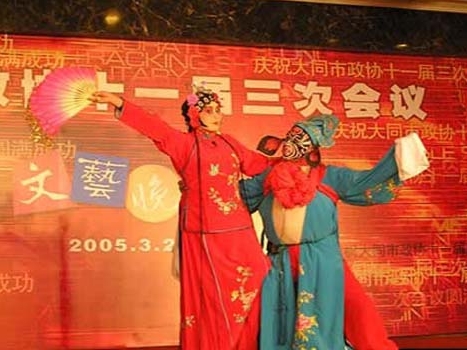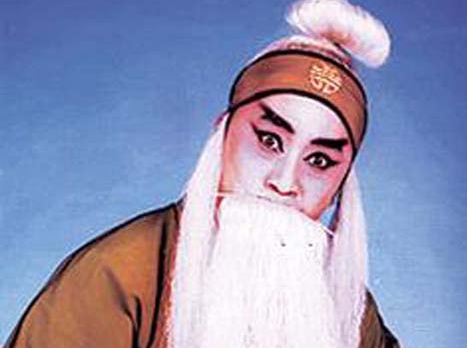
Shuahaier (literally, play with child) Opera, or Keke Tone, is a genre of opera tune named after the Qu tune. It is prevailing in Datong City and the neighboring area in the north of Shanxi Province. Shuahaier Opera is evolved from the tune of Banshe Tune · Shuahaier which was prevalent in the Jin and Yuan Dynasties under the influence of other types of opera music and folk songs. It has a history of over 600 years. Shuahaier Opera was performed exclusively by farmers at the initial stage through organizing temporary troupes in slack farming season.

Performance of Shuahaier Opera is highly profiled by dancing. Its aria is of Qu tune style with the name of "Pingquzi" and is divided into three structural types: "Ontic Style", "Inserted Style" and "Variant Style". An entire set of aria is constituted by principal tune (framing) and melodies inserted in it. Through dexterously absorbing singing styles of "Jieban" and "Gunbai" in Bangzi Opera, Shuahaier Opera is perfectly integrated with accented beat music and Qu tune music. Traditional accompanied music of Shuahaier Opera is comprised of literal passage and martial passage. Banhu Fiddle and flute are used as major musical instruments in literal passage, featuring brisk and lively tones and rhythms as well as tactful and clarion voice. In contrast, large gong, small gong, drum, cymbal and other musical instruments are used in martial passage, presenting harmoniousness under the effect of close combination of arias and musical accompaniment. The most distinct feature of Shuahaier Opera is the using of rear voice in aria phonation, that is, voice is pressed out from the rear part of throat, with whoosh running before singing. With this method, mellow and powerful sound effect is obtained by using special tamber. There are five roles in Shuahaier Opera: red, black, male, female and clown. As many motions of folk dance are absorbed by Shuahaier Opera, its performance is endowed with flavors of life and rural features. Shuahaier Opera has its own traditional repertoires, with the representative ones including White Horse Pass, Seven Virtuous Persons and Sanxiao Tabula.